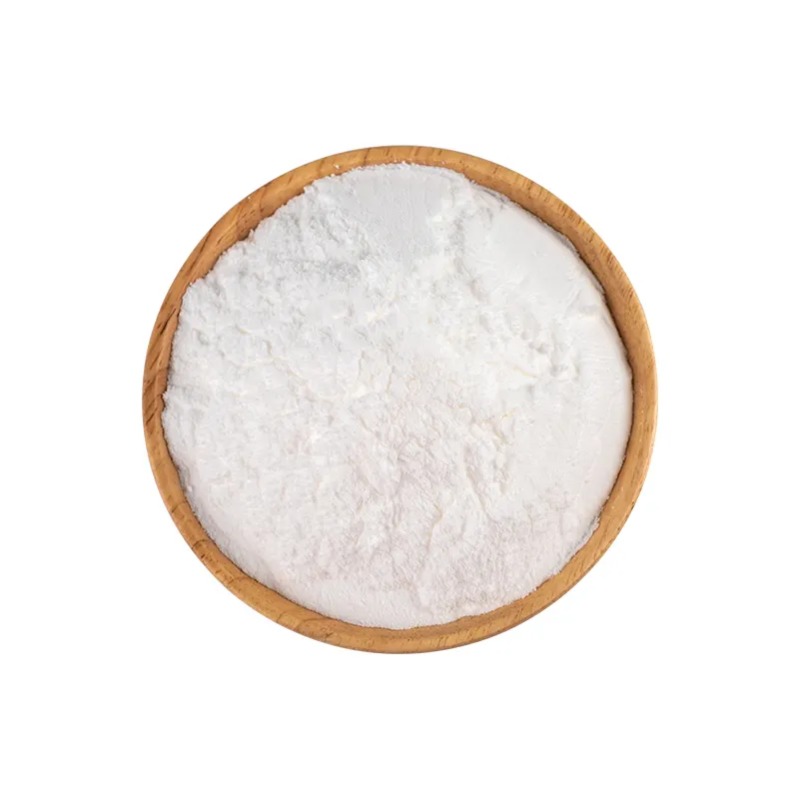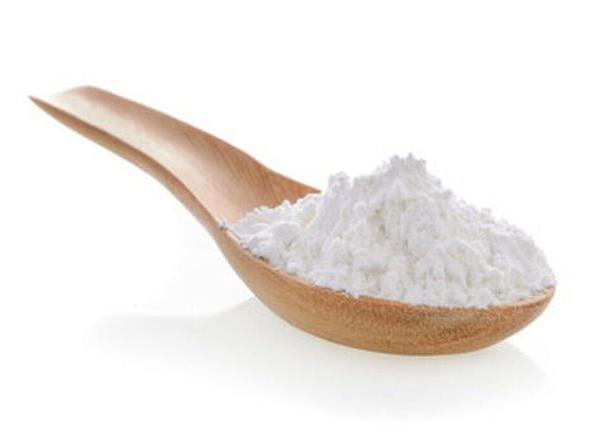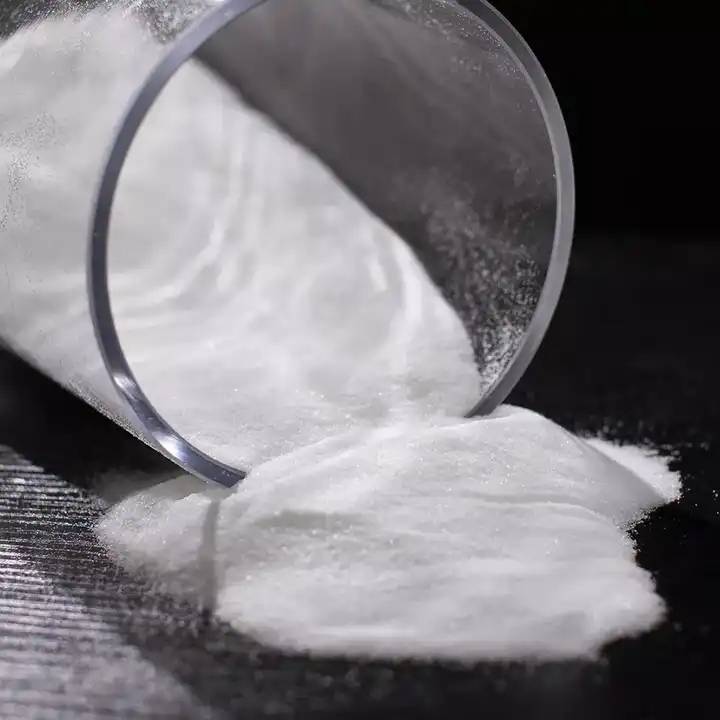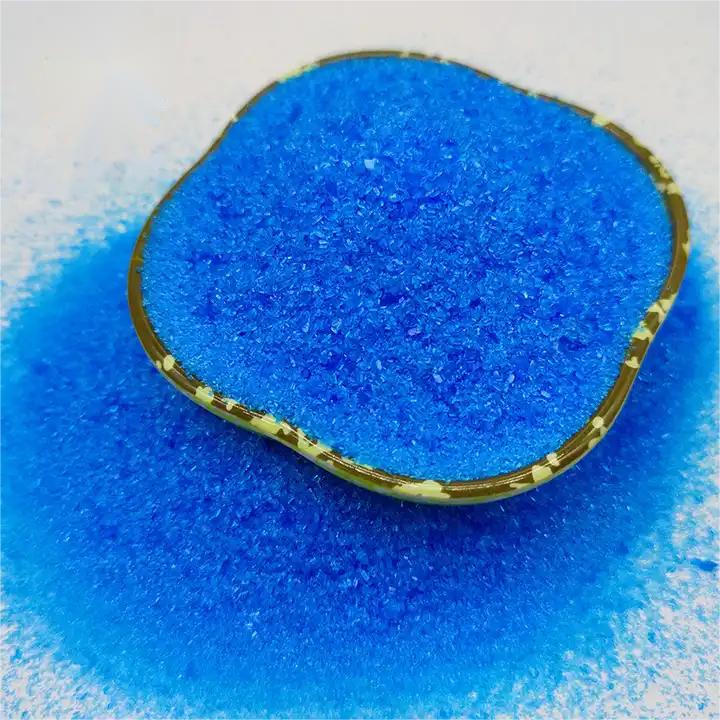Polvo de glutatión Liposomal de grado alimenticio
CAS No.:70-18-8
Ensayo :99%
Método de ensayo :HPLC
Aspecto: polvo cristalino blanco o casi blanco
Residuos de plaguicidas: cumplir con la norma (CE) n º 396/2005
- descripción
- Hoja de datos
- Certificado de certificado
-
¿Qué es el polvo reducido de L glutatión?
Reduced glutathione is a water-soluble tripeptide formed by the condensation of L-glutamic acid (L-Glu), L-cysteine (L-Cys), and glycine (Gly). It is the most abundant non-RNA-encoded thiol-containing tripeptide in eukaryotes. It has the characteristics of whitening, delaying aging, detoxification, enhancing immunity, etc. It is widely used in food, medicine, cosmetics, health care products, and other fields.
verde Spring Technology supplies Food Grade Liposomal Glutathione Powder, which has good stability and high purity and is an excellent raw material for cosmetics.
verde Spring Technology es una empresa de biotecnología líder en China, que fue fundada en 2000 y se dedica a la investigación, desarrollo, producción y venta de extractos de plantas naturales, materias primas para el cuidado de la salud natural, y materias primas cosmé.
Organiza su producción bajo ISO, HACCP y otras normas de calidad, e implementa los más altos estándares internacionales de la industria. Ha establecido un sistema de trazabilidad perfecto y todos los productos son trazables. Primavera verde tiene 8 certificaciones y 7 patentes, y sus productos se venden en más de 62 países de todo el mundo, sirviendo a más de 2.450 clientes, y disfrutando de una buena reputación.
Especificaciones:
Nombre del producto
L-glutatión de grado alimenticio
CAS No.
70-18-8
Ensayo ensayo
El 99%
Método de ensayo
HPLC
apariencia
Polvo cristalino blanco o casi blanco
Residuos de plaguicidas
Cumplir con la norma (CE) n º 396/2005
Reglamento:
Se ajusta a la normativa de la UE.
Discover Our Comprehensive Range of Glutathione Ingredient Solutions.
¿Busca un presupuesto?Benefits:
Broad Detoxification
The sulfhydryl groups on reduced glutathione neutralize and detoxify toxic compounds, heavy metal ions, or carcinogens that enter the body by combining with them and facilitating their elimination from the body. Although glutathione is present in every cell, its concentration in liver cells is 7 to 10 times higher than elsewhere. The first stage of liver detoxification is to turn toxic substances into more toxic intermediates, and the second stage is to convert the intermediates into non-toxic, water-soluble substances that are excreted through the urine. It is in the second stage that glutathione works, accelerating the metabolism of toxic substances.
Antioxidant
Glutathione can activate a variety of enzymes, such as sulfhydryl (SH) enzyme-coenzyme, thus promoting sugar, fat, and protein metabolism. The active sulfhydryl group (-SH) of GSH, the most important functional group, can participate in a variety of important biochemical reactions in the body, protect the body's important enzyme protein sulfhydryl groups from oxidation and inactivation, to ensure energy metabolism and cell utilization. At the same time, its combination with free radicals in the body through sulfhydryl groups can directly reduce free radicals to acids, thus accelerating the excretion of free radicals and counteracting the damage of free radicals to important organs. Even the reduction of GSH content is a potential signal for early activation of apoptosis, and the subsequent generation of oxygen free radicals prompts apoptosis.
Improving Liver Function
Glutathione can increase the activity of antioxidant enzymes thereby promoting the repair and regeneration of liver cells, while promoting liver detoxification, which is conducive to the protection of the liver, and also reduces the damage of cell membranes and maintains the integrity and stability of liver cell membranes. Some studies have shown that the combined application of glutathione in the treatment of viral hepatitis patients based on conventional treatment can effectively improve the total effective rate of treatment. In addition, glutathione can also be used in alcoholic liver disease, accelerate the excretion of free radicals, and reduce liver cell damage.
Maintaining Immune Function
Glutathione can regulate the activity of immune cells and enhance the body's immunity. It rapidly recognizes and removes foreign pathogenic microorganisms. It also assists in promoting antibody production in the body and facilitates the normal functioning of the immune response.
Protection of Hemoglobin
Under the oxidation of hydrogen peroxide and free radicals, some of the divalent iron in hemoglobin in red blood cells is oxidized to trivalent iron, which turns hemoglobin into methemoglobin and loses its ability to carry oxygen. Glutathione protects hemoglobin from oxidation by hydrogen peroxide and free radicals, etc., and continues to function normally in its ability to transport oxygen.
Whitening
Research shows that glutathione can inhibit the activity of tyrosinase by combining with the copper-containing active site of tyrosinase, thus reducing the formation of black color. The mechanism of action is to prompt the tyrosine from the synthesis of true melanin to the direction of light yellow brown melanin, thus reducing the appearance of darkness. In addition, the unique sulfhydryl group of glutathione has powerful antioxidant activity, which can remove ROS produced by epidermal cells after UV irradiation and reduce melanin formation induced by ROS.
Supports Energy Metabolism
Reduced glutathione, as an important intracellular regulator of metabolism, is a cofactor for both glyceraldehyde phosphate dehydrogenase, glyoxalase, and prolyl glucose dehydrogenase. It participates in the tricarboxylic acid cycle and glucose metabolism in vivo and activates a variety of enzymes, thus promoting the metabolism of sugars, fats, and proteins. While generating energy, mitochondria also produce many free radicals, which, if not removed in time, can also cause the mitochondrial function to be impaired, thus affecting energy metabolism. Therefore, reduced glutathione can scavenge free radicals, and it also has the function of protecting mitochondria and energy metabolism.
Applications:
In the Food Field:
Reduced glutathione powder has powerful antioxidant properties. It can be used in the processing of dairy products, meat, baby food, seasonings, etc., to play the role of antioxidant, inhibit browning, extend shelf life, enhance flavor, and so on. It can also be used as a functional active factor in the production of functional foods and oral health products.
In Cosmetics:
Reduced Glutathione is also prominently used as a skin whitening agent in the field of medical aesthetics, scavenging free radicals, antioxidants, skin whitening, lightening pigmentation, as well as anti-aging properties. As an ingredient in medical aesthetics, it is the main ingredient in whitening injections, some whitening skin care products, and oral whitening supplements.
In Pharmaceutical:
Glutathione are now widely used in the clinic, primarily for heavy metal detoxification, among other things, but also play an adjunctive role in the treatment of hepatitis, ophthalmic disorders, and some hemolytic disorders.
-
descargar
L glutatión reduce la COA en polvo


 inglés
inglés francés
francés español
español ruso
ruso coreano
coreano Japonés japonés
Japonés japonés












